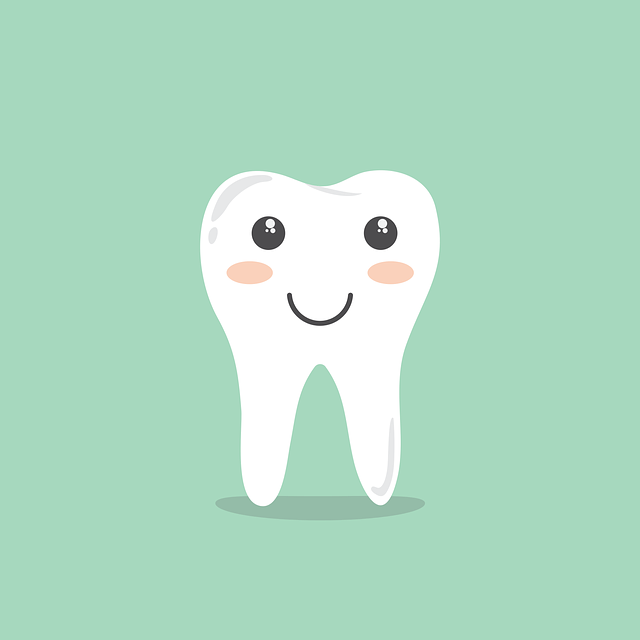In the world of modern dentistry, dental crowns have become a widely popular restorative solution for various dental challenges. However, encountering insufficient tooth structure poses a unique obstacle for both dentists and patients. This article aims to delve into the complexities surrounding insufficient tooth structure and its impact on the placement of dental crowns. Through a professional lens, we will explore the causes of insufficient tooth structure, assess the limitations it imposes, and discuss potential strategies that dentists can employ to overcome this challenge and provide successful dental crown restorations. Understanding the intricacies of this common occurrence is crucial for dental professionals seeking to deliver the highest quality care to their patients.
1. Understanding Insufficient Tooth Structure: An Ongoing Challenge in Dentistry
When it comes to dentistry, one of the ongoing challenges practitioners face is dealing with insufficient tooth structure. This issue can arise due to a variety of factors, including tooth decay, trauma, or congenital abnormalities. Understanding the causes and implications of insufficient tooth structure is crucial for successful treatment and long-term oral health.
Causes of Insufficient Tooth Structure:
-
- Tooth Decay: Poor oral hygiene and a diet high in sugar can lead to tooth decay, resulting in the loss of tooth structure.
- Trauma: Accidents or injuries to the mouth can cause fractures and breakages, resulting in inadequate tooth structure.
- Congenital Abnormalities: Some individuals are born with genetic conditions that affect tooth development, leading to insufficient tooth structure from the beginning.
Implications and Challenges:
-
- Compromised Function: Insufficient tooth structure can impact a person’s ability to chew properly, leading to difficulties in eating certain foods.
- Aesthetic Concerns: Insufficient tooth structure can affect the appearance of the smile, potentially causing self-esteem and confidence issues.
- Treatment Options: Dentists must carefully assess the extent of insufficient tooth structure in order to determine the most suitable treatment approach, which may include dental fillings, crowns, bridges, or dental implants.
2. The Need for Dental Crowns in Cases of Insufficient Tooth Structure
In cases where an individual has insufficient tooth structure, dental crowns serve as a necessary solution. When tooth decay, cracks, or fractures occur, they can significantly weaken the tooth structure, making it susceptible to further damage or even total loss. Dental crowns act as a protective covering, encasing the damaged tooth to restore its strength, functionality, and aesthetic appeal.
There are various situations that may require the use of dental crowns. These include:
-
- To protect a tooth following a root canal treatment, which can leave the tooth vulnerable and brittle.
- To restore a tooth with a large filling that has worn down and can no longer support itself properly.
- To strengthen a cracked or fractured tooth, preventing further damage and potential tooth loss.
Furthermore, dental crowns can also be utilized for cosmetic purposes, such as improving the appearance of discolored or misshapen teeth. As dental technology continues to advance, individuals with insufficient tooth structure can be confident in the ability of dental crowns to restore their oral health and enhance their smile.
3. The Impact of Insufficient Tooth Structure on Crown Placement and Function
can be significant. When a tooth has been compromised or damaged due to decay, trauma, or other dental issues, it may not have enough intact structure to support a crown properly. This can lead to various complications and limitations in terms of both aesthetics and functionality.
Complications Arising from Insufficient Tooth Structure:
-
- Difficulty in achieving proper crown retention
- Inadequate support for the crown, resulting in increased risk of fracture
- Inability to create a natural-looking and harmonious smile
- Diminished ability to withstand biting forces
- Potential for tooth sensitivity and discomfort
It is crucial to assess and address the level of tooth structure available before proceeding with crown placement. Various techniques and procedures can be employed to overcome the limitations caused by insufficient tooth structure, such as:
-
- Use of additional restorative materials, like pins or posts, to enhance strength and stability
- Resin or composite build-up to create a suitable foundation if the tooth structure is severely compromised
- Preliminary restoration, such as a provisional crown, to assess functionality and aesthetics before final crown placement
- Utilization of modern dental technologies, like computer-aided design and computer-aided manufacturing (CAD/CAM), to precisely fabricate and place crowns
By considering the impact of insufficient tooth structure and employing appropriate techniques, dental professionals can ensure successful crown placement and optimal function, ultimately leading to improved patient satisfaction.
4. Factors Contributing to Insufficient Tooth Structure and the Implications for Crown Treatment
Factors contributing to insufficient tooth structure can have significant implications for crown treatment. Understanding these factors is crucial for dental professionals in order to develop appropriate treatment plans and achieve successful outcomes. Here are some key factors that can lead to insufficient tooth structure:
-
- Tooth decay: Untreated or recurrent dental decay can gradually weaken the tooth structure, resulting in insufficient support for a crown. In such cases, the decayed portions may need to be removed before crown placement.
- Trauma: Accidents or injuries to the mouth can cause fractures, cracks, or chips in the teeth, compromising their structural integrity. When a significant amount of tooth structure is lost, crown treatment may be necessary to restore both the function and aesthetics of the affected tooth.
- Enamel erosion: Acidic food and beverages, certain medical conditions, or excessive tooth grinding can erode the protective enamel layer, leaving the underlying dentin exposed. This can weaken the tooth and necessitate the use of a crown to provide reinforcement.
- Malformation or congenital defects: Some individuals may have poorly developed or misshapen teeth from birth, making them more prone to structural deficiencies. Crown treatment can be an effective solution to improve both the appearance and function of these abnormal teeth.
It is important for dental practitioners to assess these contributing factors thoroughly to determine if a crown is the appropriate treatment option. When there is insufficient tooth structure, a crown can provide the necessary support, protection, and restoration, ultimately promoting optimal oral health and patient satisfaction.
5. Assessing and Diagnosing Insufficient Tooth Structure: Key Considerations for Dental Professionals
Dental professionals play a crucial role in assessing and diagnosing insufficient tooth structure, which can affect the overall oral health of patients. It is important to carefully evaluate the condition of the tooth and determine the appropriate treatment plan. Here are some key considerations that dental professionals should keep in mind:
- Evaluation of the tooth: A comprehensive evaluation of the tooth is essential to understand the extent of insufficient tooth structure. This involves examining the tooth’s size, shape, and any signs of decay or damage.
- Radiographic analysis: Utilizing radiographic imaging, such as X-rays, can provide valuable insights into the severity of the problem. It helps in identifying any hidden issues, such as fractures or deep cavities, that may contribute to the insufficient tooth structure.
- Patient history: Gathering information about the patient’s dental history, including previous treatments and habits, can provide valuable context. It aids in determining potential causes of tooth structure loss, such as trauma, bruxism, or poor oral hygiene.
Once the assessment is complete, an accurate diagnosis can be made, and an appropriate treatment plan can be recommended. Dental professionals should always stay updated with the latest research and techniques to effectively address the issue of insufficient tooth structure and provide the best possible care for their patients.
6. Treatment Options for Insufficient Tooth Structure: The Role of Dental Crowns
When a tooth has insufficient structure to support a filling or other restoration, dental crowns offer a reliable and durable treatment option. Dental crowns, also known as caps, are custom-made prosthetic restorations that are placed over the entire tooth. They provide both functional and aesthetic benefits, restoring the strength, shape, and appearance of the affected tooth.
There are several types of dental crowns available, each with its own advantages and considerations:
- Porcelain crowns: This type of crown is known for its natural appearance, making it an ideal choice for front teeth. Porcelain crowns are highly resistant to staining and provide excellent durability.
- Metal crowns: Made from precious or non-precious metals, metal crowns are extremely strong and withstand biting and chewing forces well. However, their metallic color may result in a less desirable aesthetic outcome.
- Porcelain-fused-to-metal crowns: These crowns combine the durability of metal with the natural appearance of porcelain. They are a good option for both front and back teeth, offering an appealing balance between aesthetics and strength.
In addition to their versatility, dental crowns also play a crucial role in preventing further damage to weakened teeth. By covering the entire tooth, they provide an extra layer of protection against decay, cracks, and fractures. Furthermore, dental crowns can restore proper bite alignment and help distribute the forces evenly among adjacent teeth, alleviating strain on surrounding structures.
7. Overcoming Challenges in Crown Placement on Teeth with Insufficient Structure
In some cases, placing a crown on a tooth with insufficient structure can pose challenges for dental professionals. However, with advanced techniques and materials available today, these challenges can be successfully overcome. Here are some strategies and considerations to ensure a successful crown placement:
- Evaluation and Treatment Planning: Thoroughly assess the tooth’s condition, including the amount of remaining tooth structure, presence of decay or fractures, and overall oral health. Determine the best course of action and treatment plan, considering factors such as patient preferences, functional requirements, and aesthetic goals.
- Build-Up and Core Material: When tooth structure is lacking, a build-up or core material may be required to provide a stable foundation for the crown. These materials, such as composite resin or amalgam, help to strengthen the tooth and create a solid base for the crown placement.
- Post and Core: In cases of extensive tooth damage or minimal remaining structure, a post and core restoration may be necessary. This involves the placement of a post within the root canal to provide additional support and stability for the crown. The core material is then built up around the post to create a structurally sound foundation.
- Periodontal Considerations: Assess the patient’s periodontal health and address any potential gum issues prior to crown placement. Achieving a healthy foundation for the crown is crucial to ensure long-term success and prevent complications.
requires a comprehensive approach and careful consideration of individual patient needs. By following these strategies and utilizing the appropriate techniques and materials, dental professionals can achieve successful outcomes and provide patients with functional and aesthetically pleasing results.
8. Innovative Techniques and Materials: Enhancing Crown Longevity on Teeth with Insufficient Structure
In order to enhance crown longevity on teeth with insufficient structure, it is crucial to employ innovative techniques and materials. By utilizing these advancements, dentists can ensure the durability and effectiveness of dental crowns, even when placed on teeth with limited structural integrity.
1. Zirconia Crowns: Zirconia is a highly durable and strong material that is increasingly being used in dentistry. These crowns are known for their ability to withstand biting forces and resist chipping or cracking, making them an excellent option for teeth with insufficient structure. Additionally, zirconia crowns offer natural-looking aesthetics, ensuring patients can regain a confident smile.
2. Fiber Posts: When dealing with compromised tooth structure, fiber posts can be a game-changer. These posts are made from reinforced or carbon fibers, providing a flexible and resilient foundation for the crown. Unlike traditional metal posts, fiber posts distribute stress more evenly, reducing the risk of tooth fractures and promoting long-term crown retention.
9. Achieving Optimal Aesthetics and Functionality: Crown Solutions for Insufficient Tooth Structure
When it comes to addressing insufficient tooth structure, crown solutions are an excellent option for achieving optimal aesthetics and functionality. Crowns are custom-made dental restorations that completely cover a tooth, restoring its shape, size, strength, and appearance. They are commonly used in cases where a tooth is decayed, damaged, or has undergone root canal treatment.
There are several crown options available, each with its own advantages and considerations. Some of the most commonly used crown materials include:
- Ceramic: Ceramic crowns are highly aesthetic and closely resemble natural teeth in both color and translucency. They are an excellent choice for front teeth.
- Porcelain-fused-to-metal (PFM): PFM crowns combine the strength of a metal substructure with the natural appearance of porcelain. These crowns offer excellent durability and are suitable for both front and back teeth.
- Zirconia: Zirconia crowns are known for their outstanding strength and durability. They are an excellent option for posterior teeth.
Before considering a crown solution, it is essential to consult with a dental professional to determine the most suitable option based on your specific needs and preferences. Factors such as the amount of tooth structure available, the location of the tooth in the mouth, and your bite pattern will all influence the choice of crown material.
10. Long-Term Management and Maintenance of Crowns on Teeth with Limited Tooth Structure
When it comes to the , certain considerations must be made to ensure their durability and functionality. Here are some important points to keep in mind:
1. Regular dental visits: It is essential to schedule regular check-ups with your dentist to monitor the condition of your crowns and address any potential issues promptly.
2. Proper oral hygiene: Maintaining good oral hygiene is crucial for the longevity of your crowns. Brushing your teeth twice a day with a soft-bristled toothbrush and using fluoride toothpaste is recommended. Flossing daily and using an antibacterial mouthwash can also help prevent plaque buildup and gum disease.
3. Avoiding damaging habits: Avoid chewing on hard objects such as ice, pens, or fingernails, as this can lead to cracks or fractures in the crowns. Additionally, refraining from grinding or clenching your teeth can help prevent unnecessary strain on the crowns.
4. Protecting against teeth grinding: If you suffer from bruxism (teeth grinding or clenching), your dentist may recommend wearing a nightguard while you sleep. This can help protect your crowns from excessive pressure and minimize the risk of damage.
5. Regular professional cleanings: Professional cleanings performed by a dental hygienist can effectively remove tartar and plaque from hard-to-reach areas around the crowns, preventing potential complications such as gum inflammation.
FAQ
Q: What does it mean when there is insufficient tooth structure for dental crowns?
A: When there is insufficient tooth structure, it refers to a situation where the tooth does not have enough natural structure or support to properly retain a dental crown.
Q: What are the common causes of insufficient tooth structure?
A: Insufficient tooth structure can occur due to various reasons such as tooth decay, dental trauma, large fillings, or previous dental treatments that have weakened the natural tooth structure.
Q: What challenges does insufficient tooth structure pose for dental crowns?
A: Insufficient tooth structure poses several challenges for dental crowns, including compromised retention, increased risk of crown dislodgement, reduced crown stability, and compromised appearance.
Q: How does insufficient tooth structure affect the retention of dental crowns?
A: Insufficient tooth structure hampers the ability of dental crowns to effectively grip or hold onto the tooth. This reduces the crown’s overall stability and can lead to premature failure or even complete dislodgement.
Q: Can dental crowns be placed on teeth with insufficient structure?
A: Yes, dental crowns can still be placed on teeth with insufficient structure. However, additional treatment steps are required to ensure a secure and long-lasting result.
Q: What are the available treatment options for teeth with insufficient structure?
A: In situations where there is insufficient tooth structure, treatment options may include building up the tooth with dental materials, such as composite resin or artificial restorative materials, or using additional techniques like posts and cores to provide additional stability.
Q: How does the buildup of tooth structure help in supporting dental crowns?
A: By adding extra dental material to the tooth, such as composite resin or artificial restorative materials, the tooth’s strength and surface area are enhanced, providing a better foundation for supporting a dental crown.
Q: Are there any alternatives to dental crowns for teeth with insufficient structure?
A: Yes, in some cases, depending on the severity of the insufficient tooth structure, alternative treatments like dental veneers or dental implants may be considered as viable options instead of dental crowns.
Q: Can insufficient tooth structure be prevented?
A: While it may not always be preventable, practicing good oral hygiene, maintaining regular dental check-ups, and avoiding habits like teeth grinding can significantly reduce the risk of insufficient tooth structure.
Q: How can one find out if they have insufficient tooth structure for dental crowns?
A: A thorough examination by a qualified dentist is necessary to determine if a tooth has insufficient structure for a dental crown. X-rays, dental impressions, and a comprehensive oral evaluation will be conducted to ascertain the condition of the tooth.
Conclusion
In conclusion, the challenge of dealing with insufficient tooth structure when considering dental crowns is one that requires careful consideration and expertise. With the advancement of dental technology and the development of new materials, dentists are now better equipped than ever before to address this challenge effectively.
It is crucial for dental professionals to thoroughly assess each patient’s unique situation and employ a tailored treatment plan that best suits their needs. Factors such as the amount of tooth structure available, the overall oral health, and the patient’s lifestyle should all be taken into account.
Various techniques and approaches can be employed to overcome the limitations posed by insufficient tooth structure. These may include the use of innovative materials that provide enhanced strength and durability, the utilization of advanced imaging techniques for accurate measurements, and the adoption of newer restoration techniques such as minimal-preparation or no-preparation crowns that preserve as much of the natural tooth as possible.
While overcoming the challenges of insufficient tooth structure is indeed complex, with the right techniques and expertise, dental professionals can achieve outstanding results. It is crucial for patients to place their trust in skilled and experienced dentists who are well-versed in overcoming this challenge, ensuring that their dental crowns are not only aesthetically pleasing but also long-lasting and functional.
Addressing insufficient tooth structure with dental crowns is a collaborative effort between the patient and their dentist. By maintaining regular dental check-ups, following proper oral hygiene practices, and promptly addressing any dental concerns, patients can play an active role in preserving their natural tooth structure and extending the lifespan of their dental crowns.
In conclusion, while insufficient tooth structure poses a challenge for dental crowns, it is not an insurmountable obstacle. Through a comprehensive assessment, proper treatment planning, and utilization of advanced techniques, dental professionals can provide patients with effective and aesthetically pleasing restorations. By understanding the limitations, collaborating with dental professionals, and committing to good oral health practices, patients can ensure optimal outcomes and enjoy the benefits of long-lasting, functional dental crowns.



